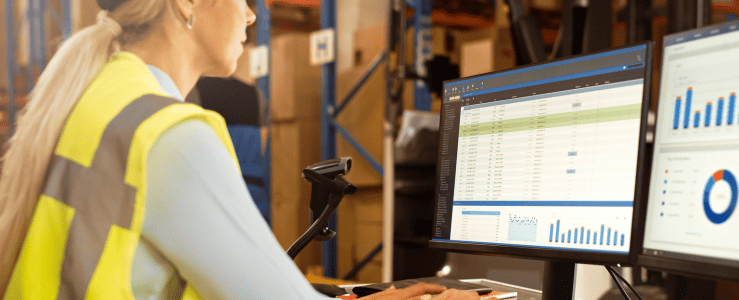Blog

How Manufacturers are Optimizing Integrations and Minimizing Risk with enosix
Previously, we walked through steps one and two in the revenue operations framework: taking a catalog-driven approach and having as few systems as possible. These are critical steps to lay the groundwork for long-term revenue understanding throughout the organization. But it will all be for naught if not closely followed by the final step: strategic integrations to not break the revenue chain. Let’s learn about what this means within your manufacturing organization and learn how enosix provides next-gen integration solutions tailored to your industry-specific needs.
- Integrate to not break the revenue chain.
The final piece of the revenue operations framework is for manufacturers to integrate to ensure they do not break the revenue chain. Manufacturers are introducing “new” technologies to optimize their internal processes to enable a more frictionless end-user experience. Think about technologies like Revenue Cloud, Manufacturing Cloud, B2B Commerce, and Rebate Management. Each of these cloud solutions from Salesforce provides manufacturers with the ability to do more, see more, and be more proactive when it comes to anticipating customer needs, allowing self-service when and where they want it, engaging with customers, and ultimately providing the “Amazon” experience they now expect.
But even with these new technologies, the ERP system will continue to serve as the “source of truth” for processes/departments such as finance and manufacturing. Adding new applications won’t actually help if they are unable to seamlessly pass information back and forth with these core systems. That passing should ideally take place in real-time, so if there is an issue with the data (e.g. the creation of a sales order) it can be identified and fixed while the user of the new system (e.g. Revenue Cloud) is still sitting in front of the screen able to fix it.
When errors are identified by batch processes minutes or hours later, a human typically becomes responsible for fixing all of the issues after the fact – often needing to follow back up with employees or even customers to get correct details. When the bad data is related to pricing, terms, or delivery dates, these errors often result in failing to fulfill a promise to a customer, taking unneeded discounts, and/or creating rushed delivery schedules.
What This Looks Like in Action
A real-world example of an integrated revenue chain can be seen at enosix’s customer American Air Filter (AAF), the world’s largest manufacturer of air filtration solutions. They operate production, warehousing, and distribution facilities in 22 countries across four continents. They needed to transform their customer and distributor experience to enable their partners to be self-sufficient. They were also under pressure to reduce overall costs and inefficiencies associated with multiple partner interactions. AAF used enosix to build a real-time integration between their backend SAP ERP and their front-end Salesforce Community Cloud. By doing so, they were able to grow their distributor community from 100 to 2,500 in three months with integration from enosix. AAF created a self-service portal that enables distributors and partners to find the information they need. The company improved the customer experience by giving partners real-time access to create orders, view partner-specific pricing, and lookup invoice history and deliveries, all in one place. As a result, AAF was able to reduce implementation costs and timelines and provide a world-class self-service experience by giving their partners access to real-time SAP data.
As the above example describes, the revenue chain isn’t complete without true real-time integration of front and backend systems. Make sure you’re not delivering a disjointed customer experience and losing out on efficiencies in your process caused by the pitfalls in traditional integration methods. The full revenue operations framework requires taking a catalog-driven approach to your revenue operations processes, having as few systems as possible in play, and integrating to not break the revenue chain. Learn more about data integration and revenue optimization with Simplus.


